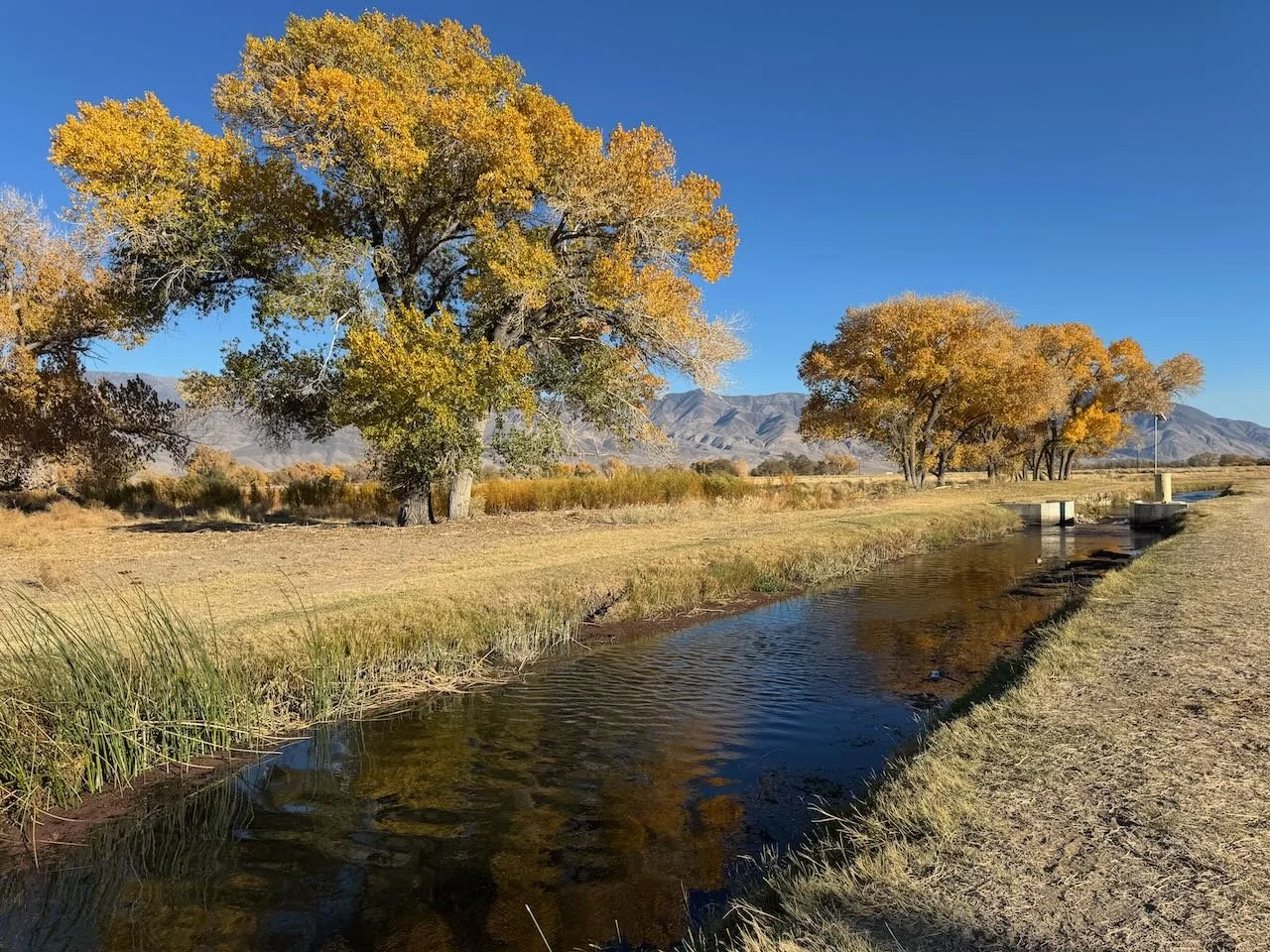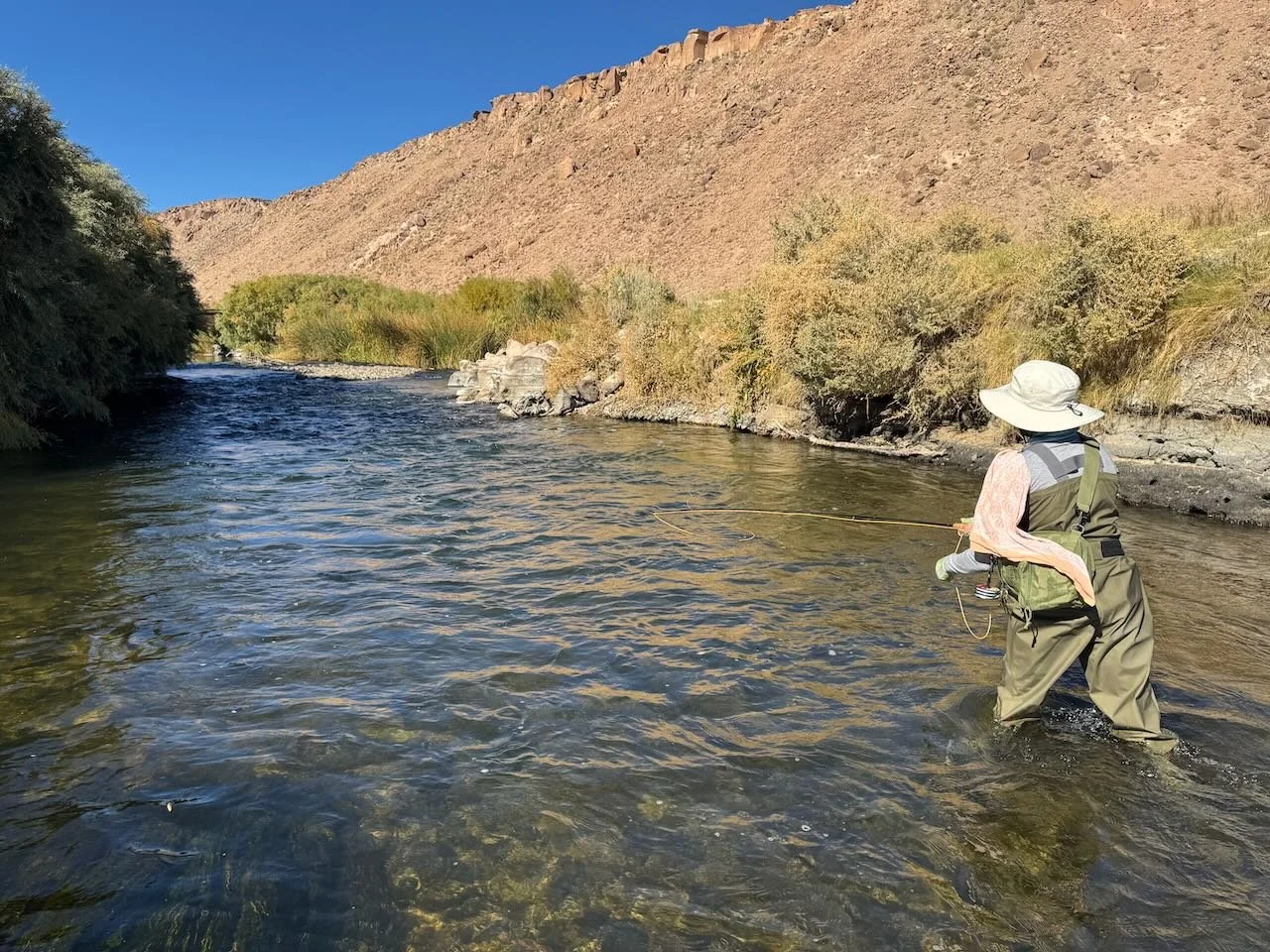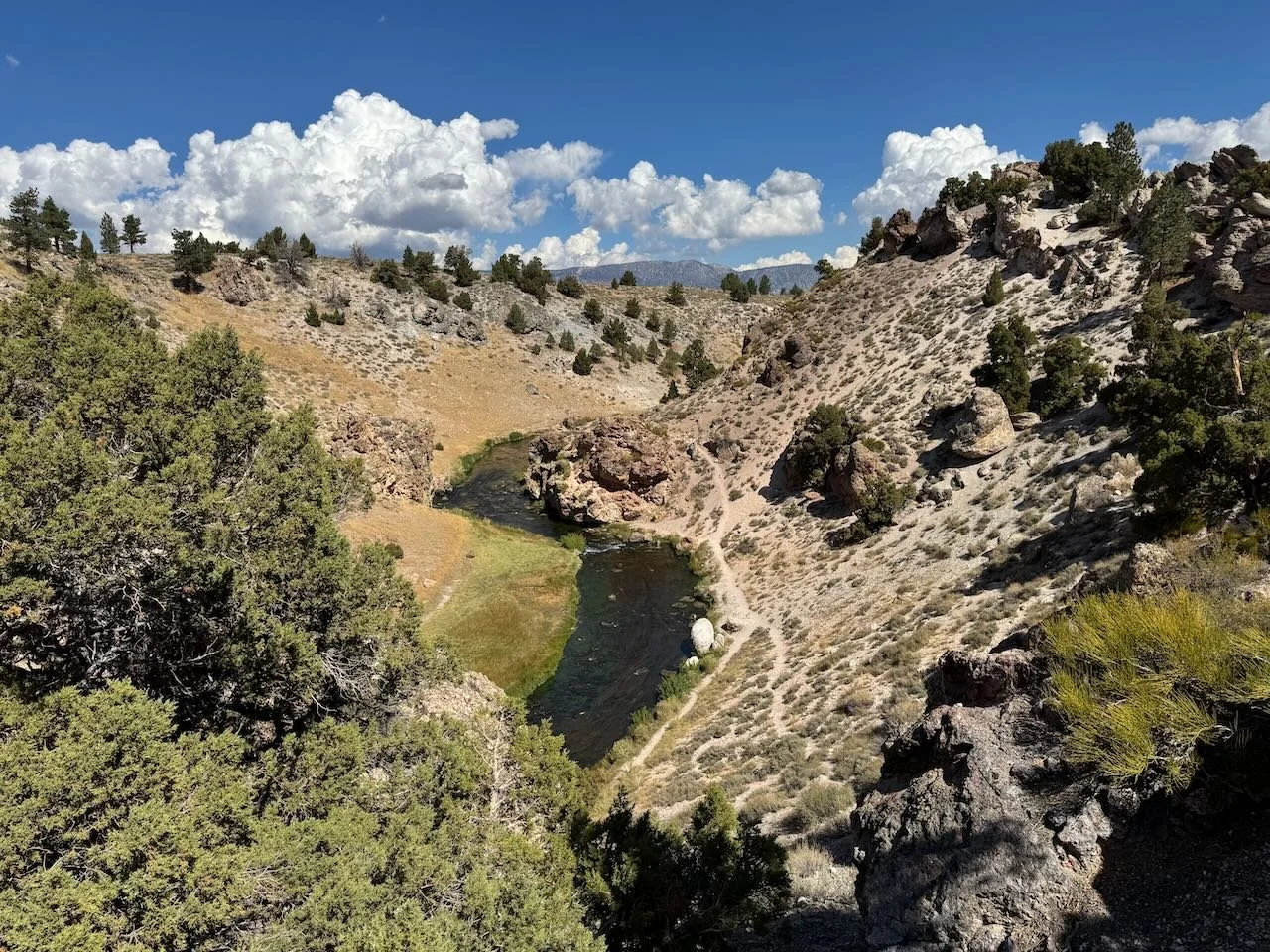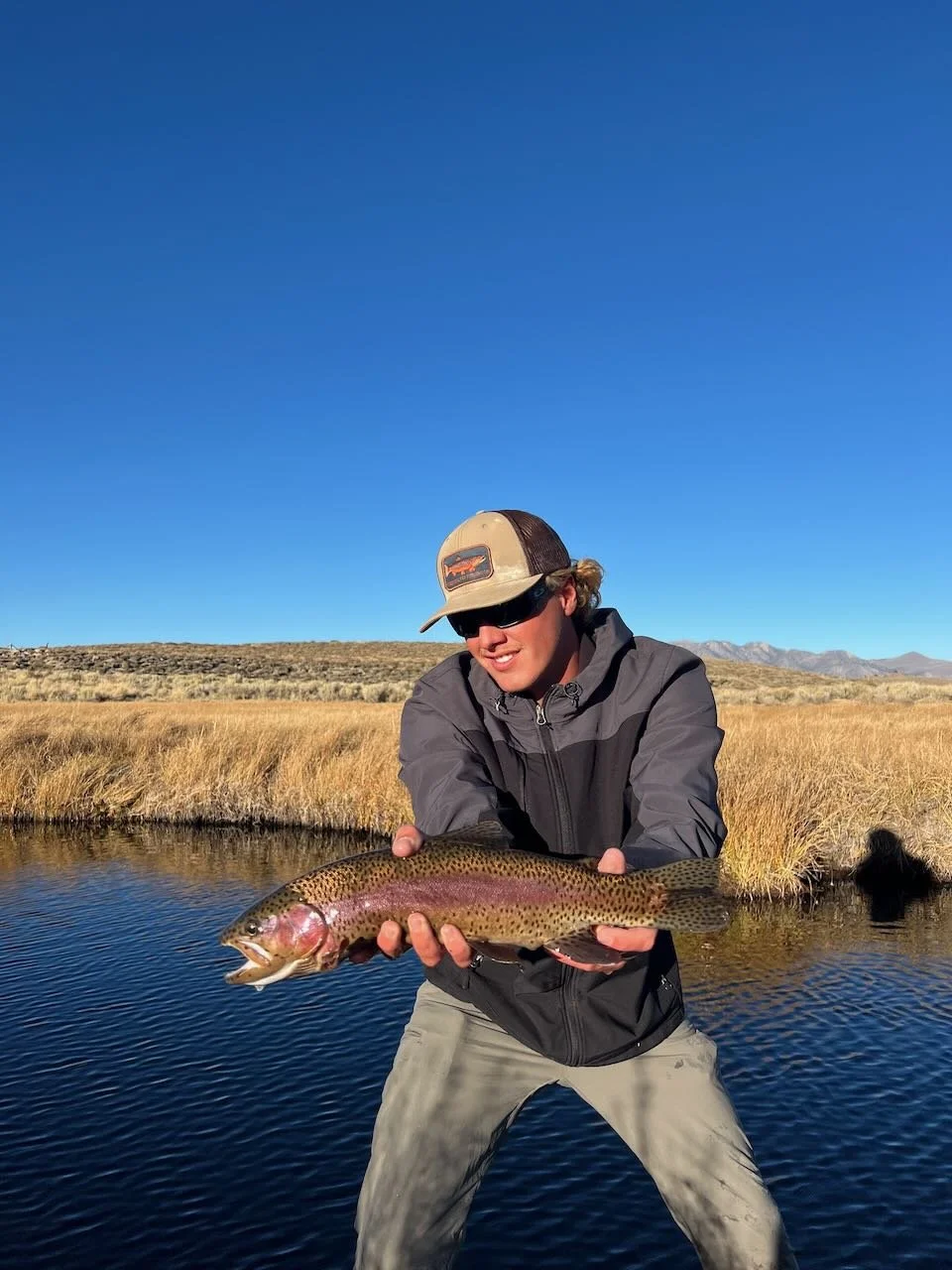As fall fades into winter there are a few warm days left to spend on the waters of the Eastern Sierra. Fall colors are in full swing in the Owens Valley. Storms moving through the Eastern Sierra are leaving snow at the tops of the mountains. Winter is right around the corner and soon there will be snow on the ground from 8,000 feet and above. Brown and brook trout are spawning in the streams. Trophy trout can be found in the tributaries to the major Eastern Sierra Lakes. Hatches, nymphs and bait fish are feeding the trout before winter sets in. Midges, mayflies and caddisflies are the insects the trout are feeding on. If you want firsthand information on Eastern Sierra fly fishing join locals and visitors every Tuesday at Mahogany Smoked Meats for Tuesday Talks with Fred from 9:00 to 11:00 A.M.
Fall is in full swing in the Owens Valley and trout in Bishop Creek Canal are taking nymphs and dries.
Lower Owens River
Wild Trout Section:
Mid-day hatches of mayflies are bringing a few trout to the surface, but the bulk of the trout are feeding on the emerging mayflies. A size 18 bead head flash back pheasant tail nymph, size 18 olive quilldigon, size 18 Frenchies, size 16 hot spot pheasant tail nymphs and size 18 olive quill nymph are fooling wild rainbow and brown trout from six inches to the occasional 16 incher. For the dry fly fisher fish with size 18 blue wing olive parachutes, size 18 Adams parachutes and size 18 olive sparkle duns. Key to success is to wade in the river fishing up stream thoroughly covering the water from one bank to the other. Where there is a riffle leading into a pool cast your flies a foot or so into the riffle and let the water present the flies to the fish in the pool.
Working nymphs off the riffle into a pool is how the fly fishers imitates the action of the larval insects .
Hot Creek
Interpretive Site:
Blue wing olive mayflies are now the predominate hatch in the Interpretive Site of Hot Creek. Start the morning casting size 20 blue wing olive parachutes, size 20 Adams parachutes and size 20 olive sparkle duns upstream with a drag free drift. Mid-morning switch to a size 20 gray elk hair caddis, size 20 parachute caddis and size 20 X-caddis. Key to success is seeing your flies and getting a drag free drift.
Hot Creek Canyon is easiest fished with a dry fly in and around the narrow lanes in between the weed beds.
Hot Creek
Canyon Section:
As the amount of day light shortens the weed beds in Hot Creek Canyon begin to break up. Fly fishers still have to contend with the narrow lanes between the weed beds and drift their flies in those narrow lanes. Nymphing is tough with all the weeds in the creek. Look for spots without weeds, next to the banks and the deep holes. For nymphs fish with size 18 tiger and zebra midges, size 18 bead head flash back pheasant tail nymphs and size 18 olive quilldigons. Dry flies drift over the weed beds better than the nymphs. Fish with size 20 blue wing olive parachutes, size 20 Adams parachutes and size 20 olive sparkle duns. For those anglers that can’t see the tiny size 20 dry flies fish with a dry and dry rig. I like to use a size 16 Adams parachute as my indicator fly.
Rusty Echeverria used a small white streamer to fool this upper Owens River rainbow.
Upper Owens River
Above Benton Crossing Bridge:
Fly fishers nymphing and stripping streamers continue to find trophy brown and rainbow trout willing to take their flies. The fish are spread out from Crowley Lake to Arcularius Ranch. The key to success is covering lots of water looking for pods of trophy trout in the deep holes, deep runs and cut banks. Fish nymphs under an indicator or with a Euro rig. Nymph with size 12 stoner nymphs, size 12 green/gold wire Prince nymphs, size 12 gold ribbed hare’s ear variations, size 14 copper John’s and size 16 hot spot pheasant tail nymphs. Cast streamers downstream and stirp them up stream. Work them at different levels in the water column and strip them in with different types of retrieves. Streamer with matukas, wooly buggers, slumpbusters, balanced leeches and marabou muddlers in sizes 6 and 10.
Hatchery rainbow trout put up a good fight on the Tenkara rod rigged with a two fly nymph rig on Bishop Creek Canal.
Bishop Creek Canal
Behind Bishop Veterinary Hospital:
This is the perfect time of year to be fishing on Bishop Creek Canal as the trees are in prime fall colors and the trout are feeding on nymphs and adults. Nymphing with size 12 stoner nymphs, size 18 olive quilldigons, size 12 green/gold wire Prince nymphs, size 18 midges in tiger and zebra coloration and size 16 hot spot pheasant tail nymphs are producing stocked rainbows and wild brown trout. The afternoon mayfly hatch is bringing only a few fish to the surface.





